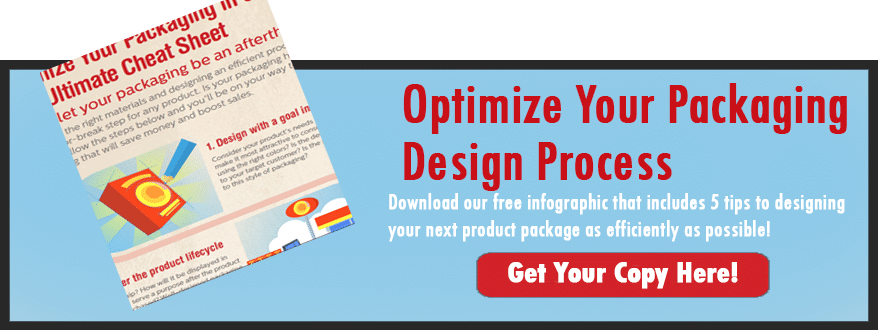The Impact Of Flexible Packaging On The Food Industry
Packaging Materials | Environment | The Business of Packaging | Investment | Packaging Design | Food Packaging
Research shows that demand for flexible packaging in the U.S. is expected to rise 3.2% per year through 2021. From cost savings to marketing adaptability, the advantages of this packaging option are becoming more widely recognized across an array of industries. The food and beverage sector is no exception, as food brands adopt flexible packaging for more and more types of consumer packaged goods (CPG).
Even foods with high liquid contents such as soups are being transitioned from rigid packaging containers to flexible pouches, and the fastest advances towards flexible packaging through 2021 are anticipated for beverages. Here’s an inside look at why flexible packaging has such an impact on the food industry, and why this option is quickly becoming a top choice for food companies everywhere.
Your Free Packaging Design Cheat Sheet
Get 5 actionable tips to start optimizing your packaging for efficiency.
What is Flexible Packaging?
According to the Flexible Packaging Association, flexible packaging consists of any package or part of a package that’s shape can be readily changed. This includes non-rigid structures such as bags, pouches, shrink films, tubes, sleeves and carded packaging.
Because it combines some of the most beneficial qualities of plastic, film, paper and aluminum foil, flexible packaging offers a broad range of protective properties while minimizing materials and costs. Given these advantages, it continues to be one of the fastest growing segments of the packaging industry.
Some of the leading options in flexible packaging for foods include:
- Pouches are versatile packages that can stand upright on shelves, have airtight closures, are easy to pack and place on store shelves, feature significant visibility capabilities and are fully customizable.
- They also can have multiple layers of protection that are customizable to accommodate nearly any product. The downside to many layers is that once they reach their end-of-life they are more difficult to recycle. This is because they must be broken down to their singular polymer forms to be recyclable.
While many layers are flexible films that are known for ensuring food safety and extending shelf life, there are several other layers that may be included to fit your particular product needs. These protective layers can allow for more even heating and barrier protection against gases and liquids from both inside and out. Pouches packages are hot right now thanks to their ease of use, options for resealability after purchase and for their excellent high-quality printability.
- Flexible Films are varied in their polymer makeup for foods, but include PVC (polyvinyl-chloride), POF (polyolefin), PE (polyethylene, LLDPE (low linear-density polyethylene) and more. These are often either used in bagging, blister, clamshell and other carded packages, or as a protective layer over trayed foods to improve shelf-life and protect the contents from exterior elements including moisture, oxygen and other contaminants.
- Flexible films are extremely important in reducing carbon footprints for businesses of any size especially because they reduce overall food waste and weight of finished goods which in turn creates less emissions from freight deliveries. Though plastics get a bad rap (PUN!) because they are a major cause of litter and they take a long time to degrade, without them we would be seeing more food waste, which means more product need, higher cost and more shipments.
- Ultimately this would be worse on the environment with greenhouse gas emissions skyrocketing.
- Foil is (in some cases) a recyclable material, and in other instances, such as when used in a multi-layer packaging (like a pouch) it may not be. Foil packaging keeps food fresh and safe by blocking air, light, moisture and bacteria, thereby increasing a product’s shelf life.
- Additional protective packaging ranging in type and size, and designed for all types of packaging needs, like palletizing bulk products with stretch wrap. Other popular examples include air pillows and electrostatic discharge (ESD) bagging.
How Is Flexible Packaging Affecting the Food Industry?
As flexible packaging gains popularity in the food industry, it is widely viewed by national brand owners and private labels as the packaging of choice for many types of foods on both a domestic and global level. The U.S. flexible packaging market was valued at approximately $24 billion in 2016, while the global market came in at $98 billion.
From soups to cocktails, the industry is experiencing a major shift to flexible pouches for foods and beverages that contain high liquid contents. This option is both lightweight and convenient, and it enables innovative structures and graphic treatments.
A recent study by The Freedonia Group reports that food markets for converted flexible packaging accounted for 71% of total demand in 2016 and are expected to rise to $15.5 billion in 2021. It also reveals that meat/poultry/seafood, baked goods, snack food, produce, candy/confections and pet food were the largest food markets for converted flexible packaging in 2016, accounting for a combined 65% of food packaging demand. Through 2021, the fastest advances are anticipated in beverages, with meat/poultry/seafood and snack food also seeing positive gains.
How Are Food Companies Benefiting?
In each aspect of the food packaging process, there is a selection of options in flexible packaging protection. Various materials and applications of flexible packaging offer undeniable advantages to food and beverage brands across the market, with competitive benefits like:
- Convenience and ease of use. Flexible packaging is lightweight as well as easy to open, carry, store and reseal with features like zip locks and spouts. The convenience factor makes food products more attractive to consumers, which translates to greater sales opportunities for brands.
- Extended shelf life. Flexible packaging extends the shelf life of many food products because it leverages materials capable of maintaining appropriate temperatures and controlling the transmission of oxygen, carbon dioxide, ethylene and water vapors.
- Food safety. Flexible packaging often incorporates barrier material that blocks harmful ultraviolet (UV) rays from the sun, moisture, grease, contamination and oxygen.
- Environmental friendliness. Flexible packaging requires less energy to manufacture and transport, and it generates smaller quantities of greenhouse gases on its way to market. The recyclability and sustainability of some flexible packaging options, as well as their minimization of materials, can boost product appeal to consumers who prefer buying from companies that take steps to reduce their environmental impact and ecological footprint.
- Branding functionality and adaptability. Flexible packaging provides an opportunity for brands to maximize shelf appeal, make their products more visible and employ creative presentation and marketing options.
Exceptional flexibility in packaging is critical for players in the food industry as they aim to protect, market and distribute different types of products without damage. Given its value to both brands and consumers, there’s not much reason for food companies to ignore flexible packaging any longer.
From food safety and shelf life to product protection, ease of use, print-ability and sustainability, there’s no shortage of causes for the unprecedented advancement of flexible packaging offerings in the food and beverage industry. The array of materials and customizable elements is an advantage for companies manufacturing all types of foods.
Whether your goal is to increase your product’s shelf life, minimize loss during transit, ensure proper humidity levels and temperatures, develop more creative package branding, adopt environmentally conscious packaging efforts or minimize production and costs, flexible packaging is a top solution for your food and beverage products.
Looking for ways to make your packaging design process more efficient? Download your free cheat sheet to access actionable tips for optimizing your packaging process.
About David Roberge
I am grateful to be part of the outstanding Industrial Packaging team. I am able to hang out with some of the most knowledgeable folks in the packaging industry. I feel even luckier that I am able to share that knowledge with you. I love learning, hiking, and growing people and teams both personally and professionally, and helping companies grow better.




